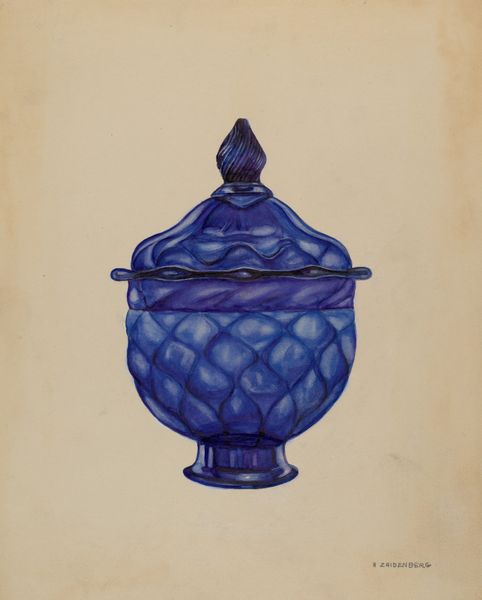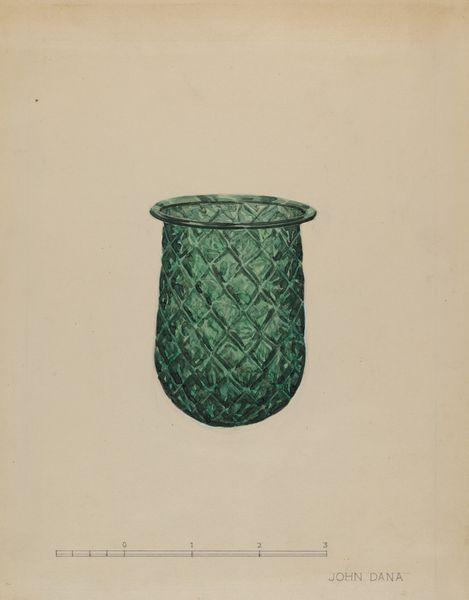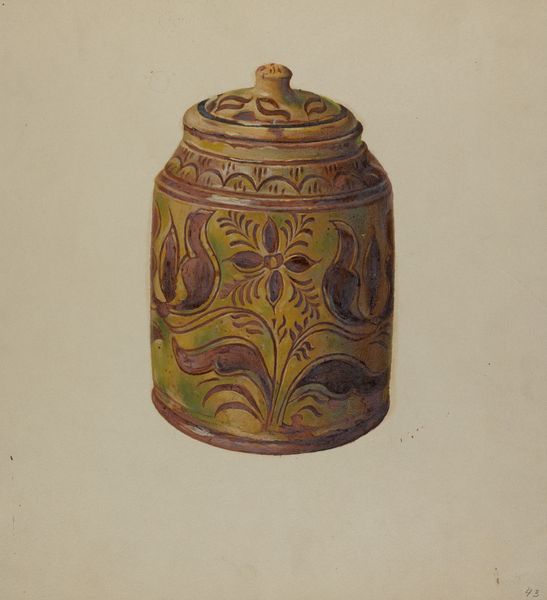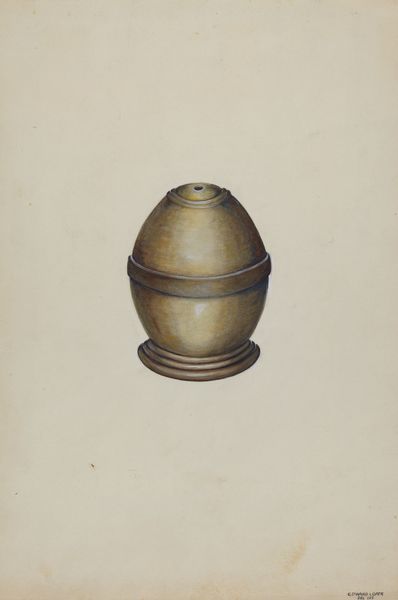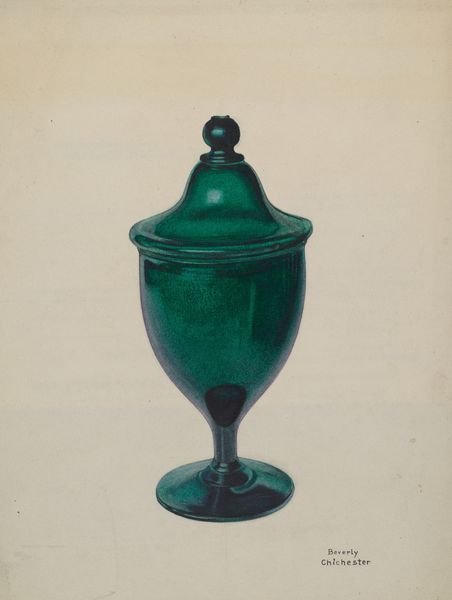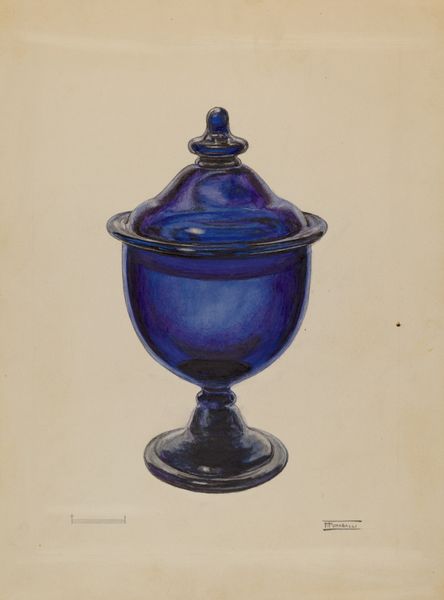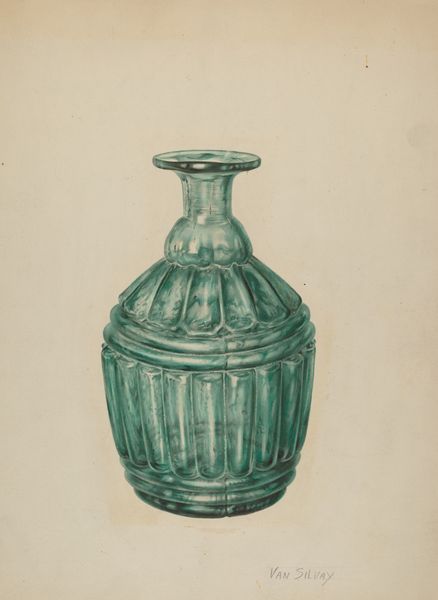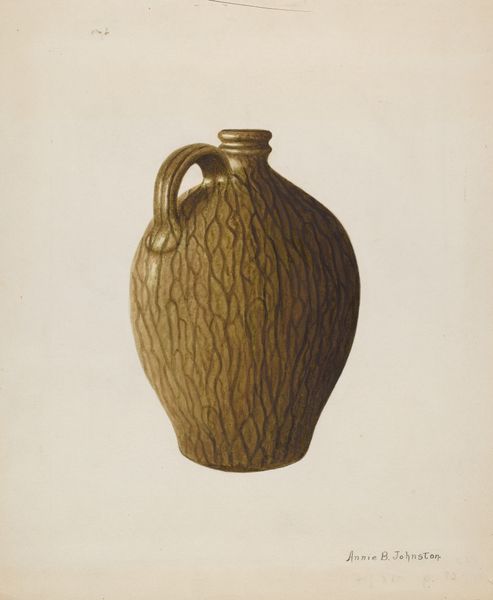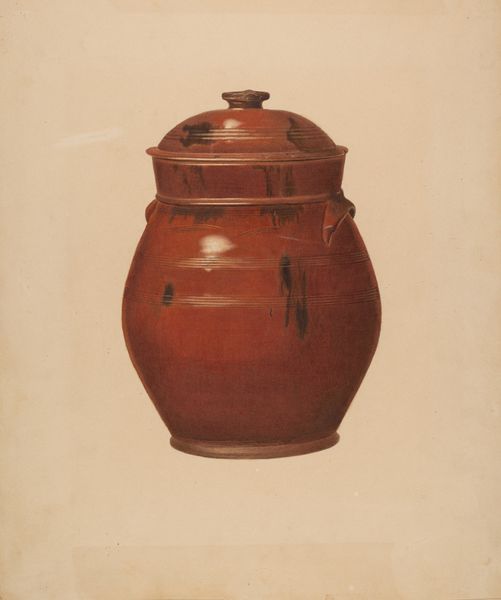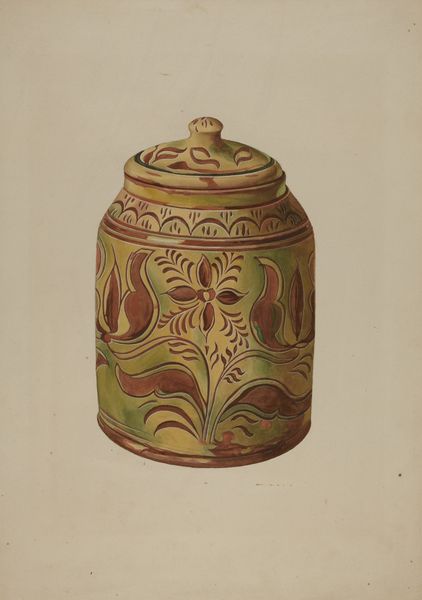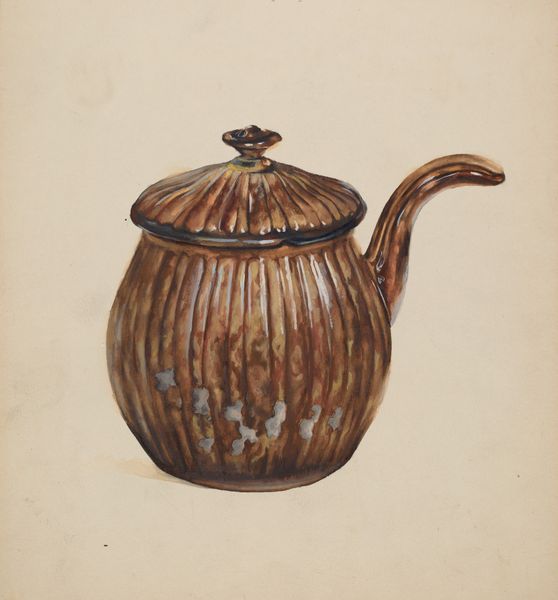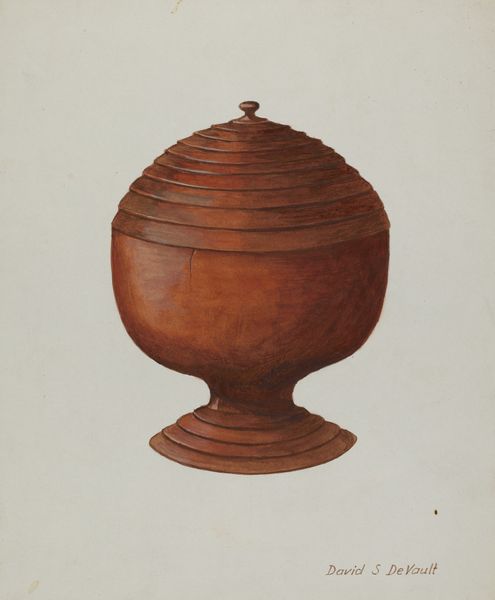
drawing, watercolor
#
drawing
#
charcoal drawing
#
oil painting
#
watercolor
#
watercolour illustration
#
watercolor
#
realism
Dimensions: overall: 30.5 x 22.9 cm (12 x 9 in.)
Copyright: National Gallery of Art: CC0 1.0
Editor: This is Isidore Steinberg’s "Sugar Bowl," created around 1940, and rendered with watercolor. It’s quite striking, but I can’t help but feel a subtle sense of melancholy looking at it. What historical context shapes how we should view this artwork? Curator: A good starting point is considering the function of sugar bowls and the context of consumption during that period. Sugar was no longer an exotic rarity, but mass production still linked it to colonialism and exploitative labor practices. Editor: So, even something seemingly mundane as a sugar bowl has socio-political ties? Curator: Absolutely. Steinberg created this during the interwar period. Sugar, while ubiquitous, carried complex historical baggage related to exploitation, and depending on its quality, might have represented status. How does Steinberg's treatment, specifically his use of such a somber palette, reinforce or subvert these associations? Editor: Well, the subdued, almost monochromatic color palette contrasts sharply with the sweet substance the bowl is designed to hold. It seems like a deliberate choice. Curator: Precisely. Considering this object in a gallery or museum context also shapes our understanding. How does presenting something so quotidian as art alter its significance, and therefore our own appreciation of our day-to-day life? Editor: I hadn't thought about that. Displaying it here makes you consider its cultural weight more than just its utility. Almost like it’s asking us to unpack all the stories that go with something we take for granted. Curator: Indeed. The artistic choices highlight the complicated social history surrounding something that is otherwise encountered as a simple addition to a cup of tea. Editor: This really has given me a lot to reflect on regarding our relationship with objects. Curator: And me too; It is easy to pass such art pieces by as uninteresting, but such everyday art invites reflection on power dynamics woven into common items.
Comments
No comments
Be the first to comment and join the conversation on the ultimate creative platform.

